Ujima
WeWorkUjima (oo-JEE-mah) Collective Work & Responsibility. "To build and maintain our community together and to make our brother's and sister's problems our problems, and to solve them together."

Neighborhoods that host WeWork co-working buildings have seen considerable economic benefits. According to a 2019 economic impact study commissioned by WeWork, WeWork's small business members were 13% more likely to succeed beyond three years, and they also saved 35% on space and systems costs on average compared to traditional commercial real estate. According to the same study, there were roughly twice as many women in senior roles at WeWork member companies compared to the national average, and WeWork buildings, on average, boasted a job creation multiplier of 1.7x. The economic impact on neighborhoods and cities was significant. However, underserved communities in major cities across the country that have rarely felt this economic impact.*
Ujima is a test case for working with traditionally underserved communities to leverage the WeWork ecosystem to fulfill their goals.
Ujima is a test case for working with traditionally underserved communities to leverage the WeWork ecosystem to fulfill their goals.
Executive leaders at WeWork hold a deep commitment to ensuring that WeWork's mission -"To create a world where people work to make a life, not just a living."- was genuinely accessible to people from all walks of life. This project, where we focused explicitly on a traditionally underserved community, is a direct reflection of their commitment.
This project was markedly different from delivering a typical WeWork location. Primarily, WeWork locations are designed and built from speculative positions, albeit an informed, well researched, and modeled one. A WeWork building in that regard is like a campfire, drawing people to it and creating a community within and around it.
Traditionally underserved neighborhoods in major American cities have experienced considerable gentrification and displacement for several decades. The area we were working in was no exception.
This project was markedly different from delivering a typical WeWork location. Primarily, WeWork locations are designed and built from speculative positions, albeit an informed, well researched, and modeled one. A WeWork building in that regard is like a campfire, drawing people to it and creating a community within and around it.
Traditionally underserved neighborhoods in major American cities have experienced considerable gentrification and displacement for several decades. The area we were working in was no exception.

Community leaders got up to speed quickly with Design Thinking methods -using them as a springboard to articulate powerful mission statements, and generate a vast range of ideas.


Boyle Heights is one of the last enclaves in Los Angeles that has not succumb to the pressures of gentrification. The neighborhood has profoundly deep Mexican American roots, and a community immensely connected to that heritage -and protecting it. This sign above reads, “Stop gentrification. One Boyle Heights. By Boyle Heights. For Boyle Heights.”, hung across from Mariachi Plaze, the landmark civic space of the neighborhood.

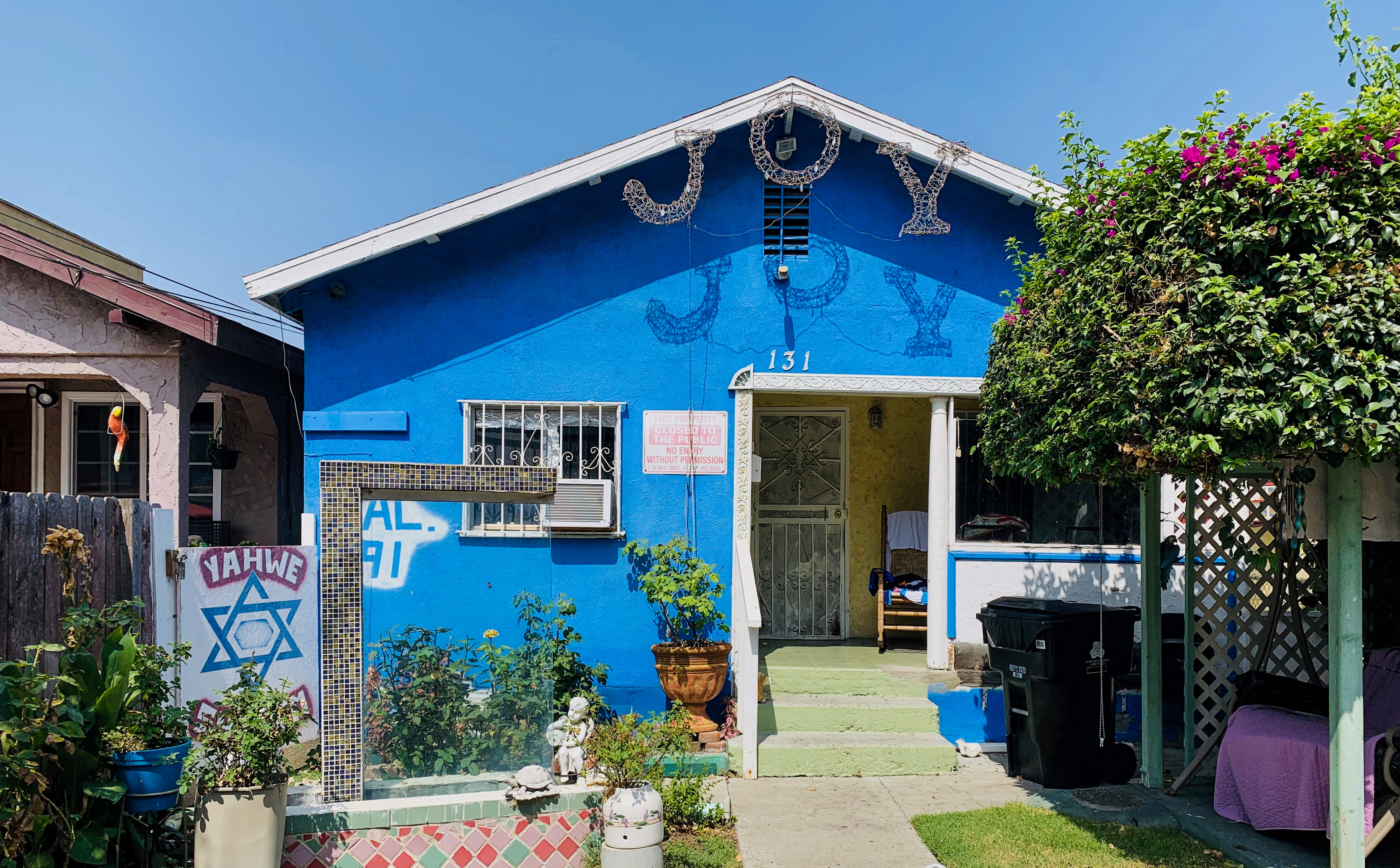
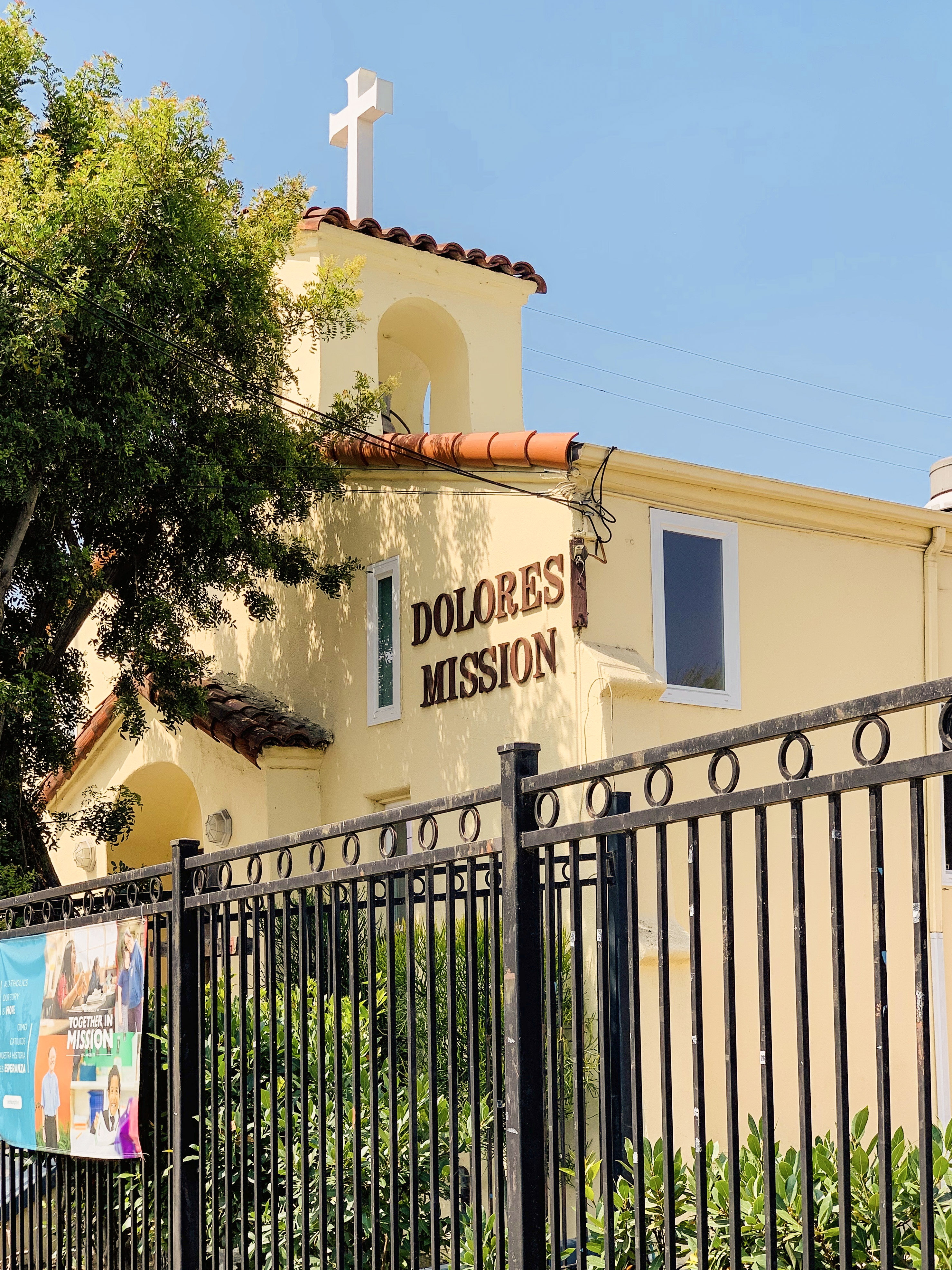




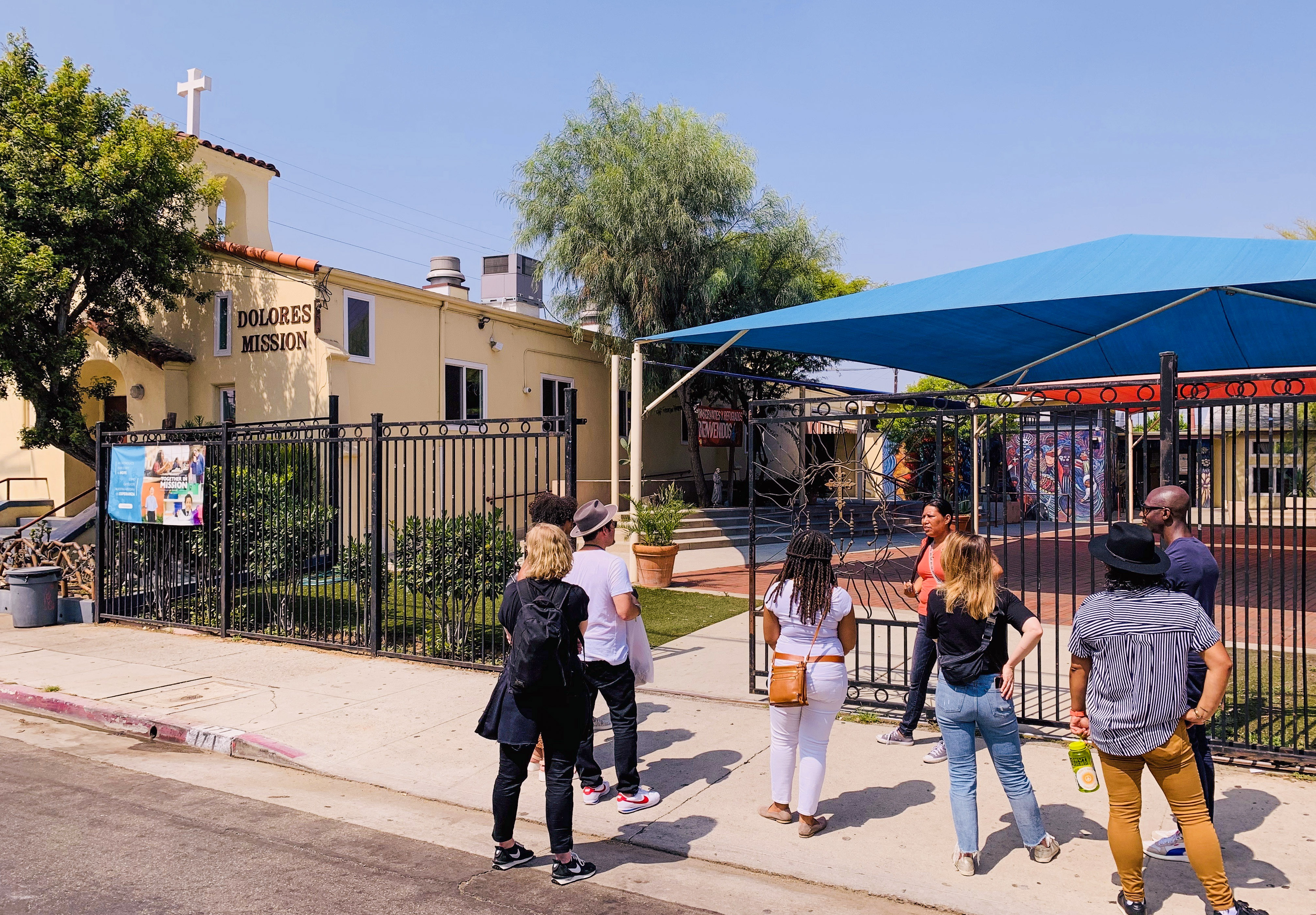

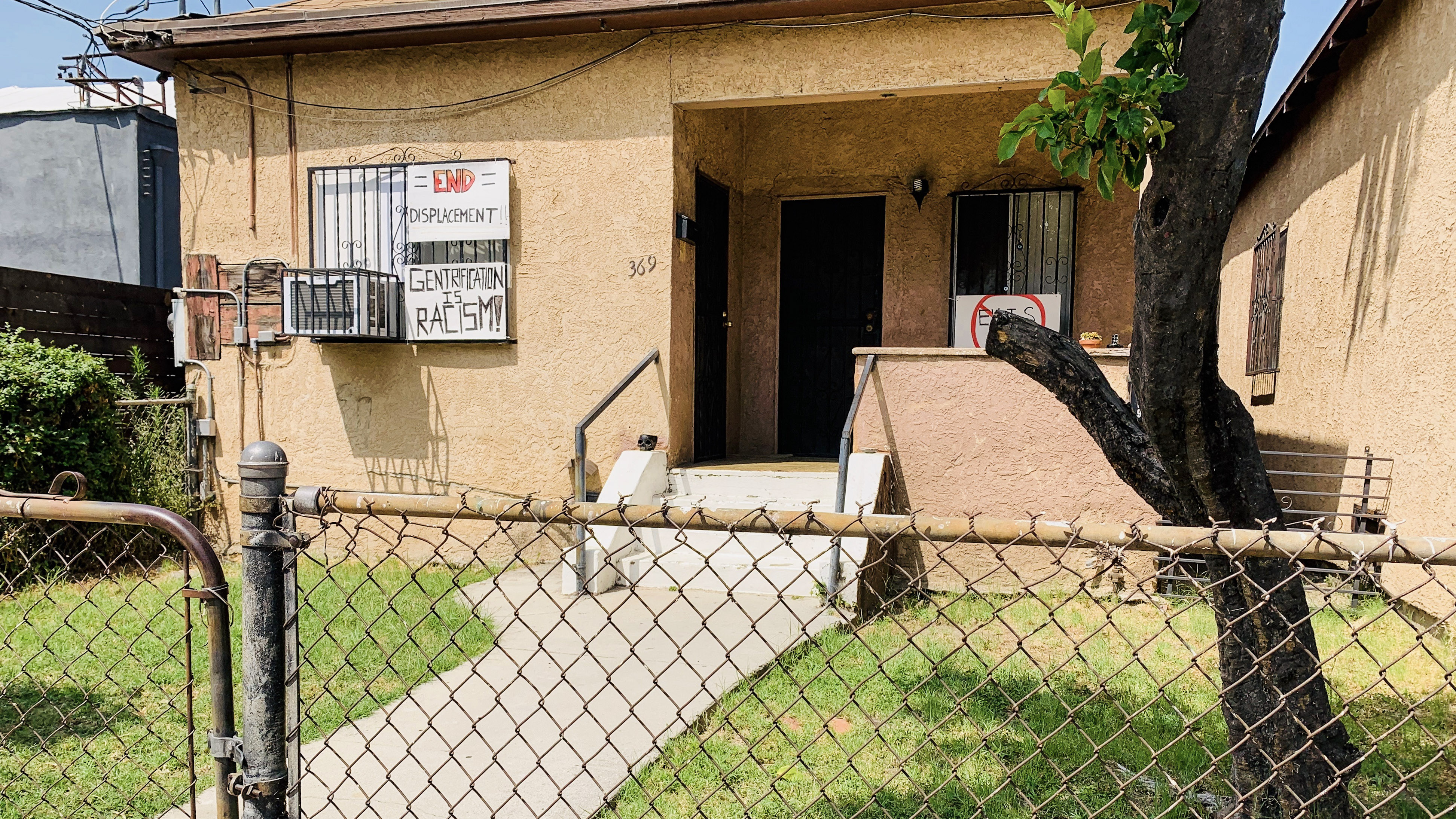

Although, a notable distinction was that this neighborhood gained a venerable reputation for the use of hard-line tactics to combat activity that was perceived to be the onset gentrification. Frankly, it is not very easy to imagine a more challenging set of circumstances in which to pursue this project.
We worked primarily with a local advocacy organization to begin a dialogue with local community leaders in the arts, business, and non-profit communities, among other areas. This dialogue served as the impetus for an envisioning session to help us learn about the neighborhood and the issues that drive the community leaders in the work they do. It was evident to us, the WeWork team, that we needed to follow the lead and expertise of the community leaders in articulating their missions. However, we would serve as process experts. We guided community leaders through a set of Design Thinking exercises, articulating the purposes of their work, orienting their missions to problem statements, generating a vast number of wide-ranging ideas, and prioritizing resonant ideas.
We worked primarily with a local advocacy organization to begin a dialogue with local community leaders in the arts, business, and non-profit communities, among other areas. This dialogue served as the impetus for an envisioning session to help us learn about the neighborhood and the issues that drive the community leaders in the work they do. It was evident to us, the WeWork team, that we needed to follow the lead and expertise of the community leaders in articulating their missions. However, we would serve as process experts. We guided community leaders through a set of Design Thinking exercises, articulating the purposes of their work, orienting their missions to problem statements, generating a vast number of wide-ranging ideas, and prioritizing resonant ideas.
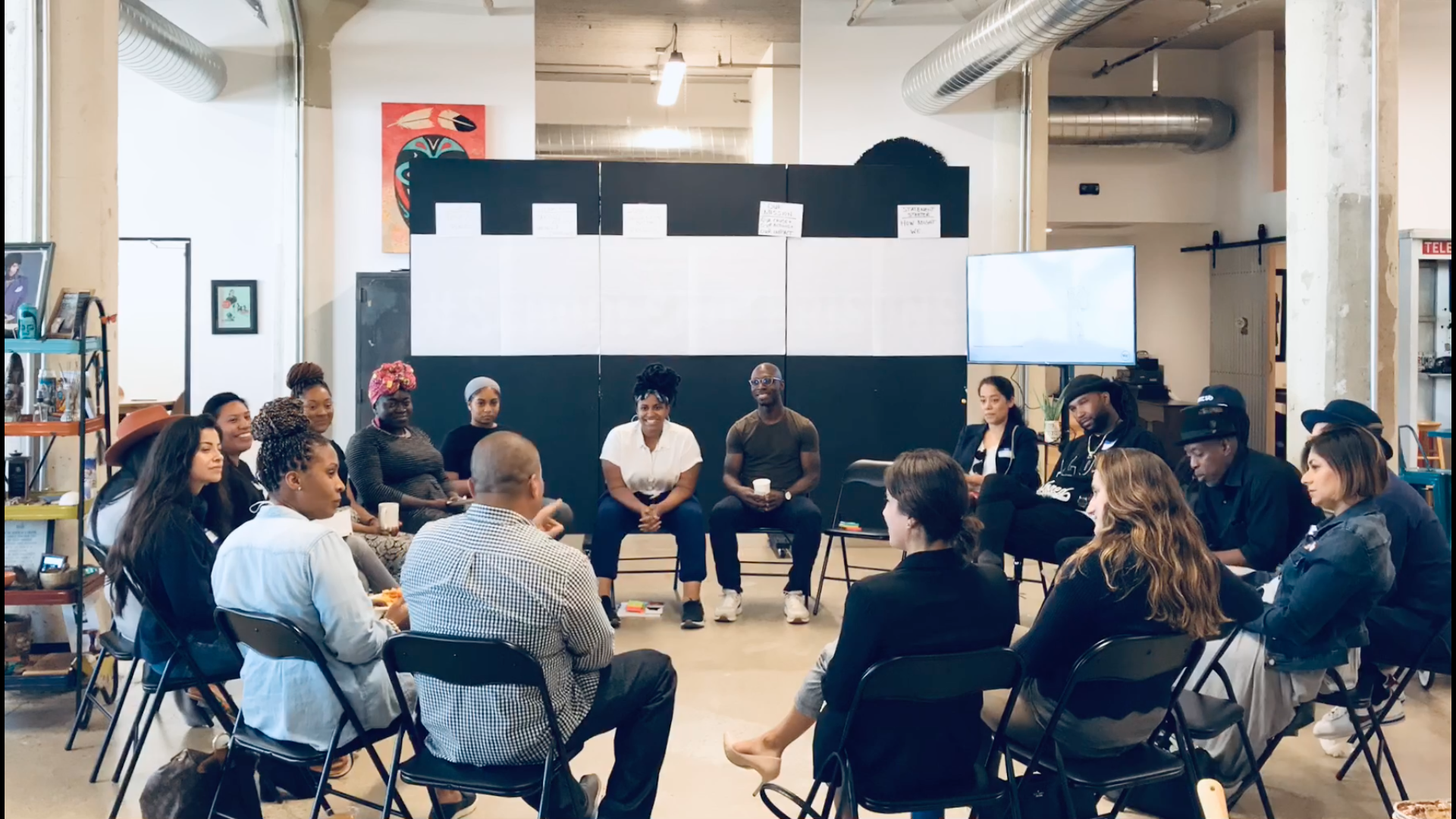
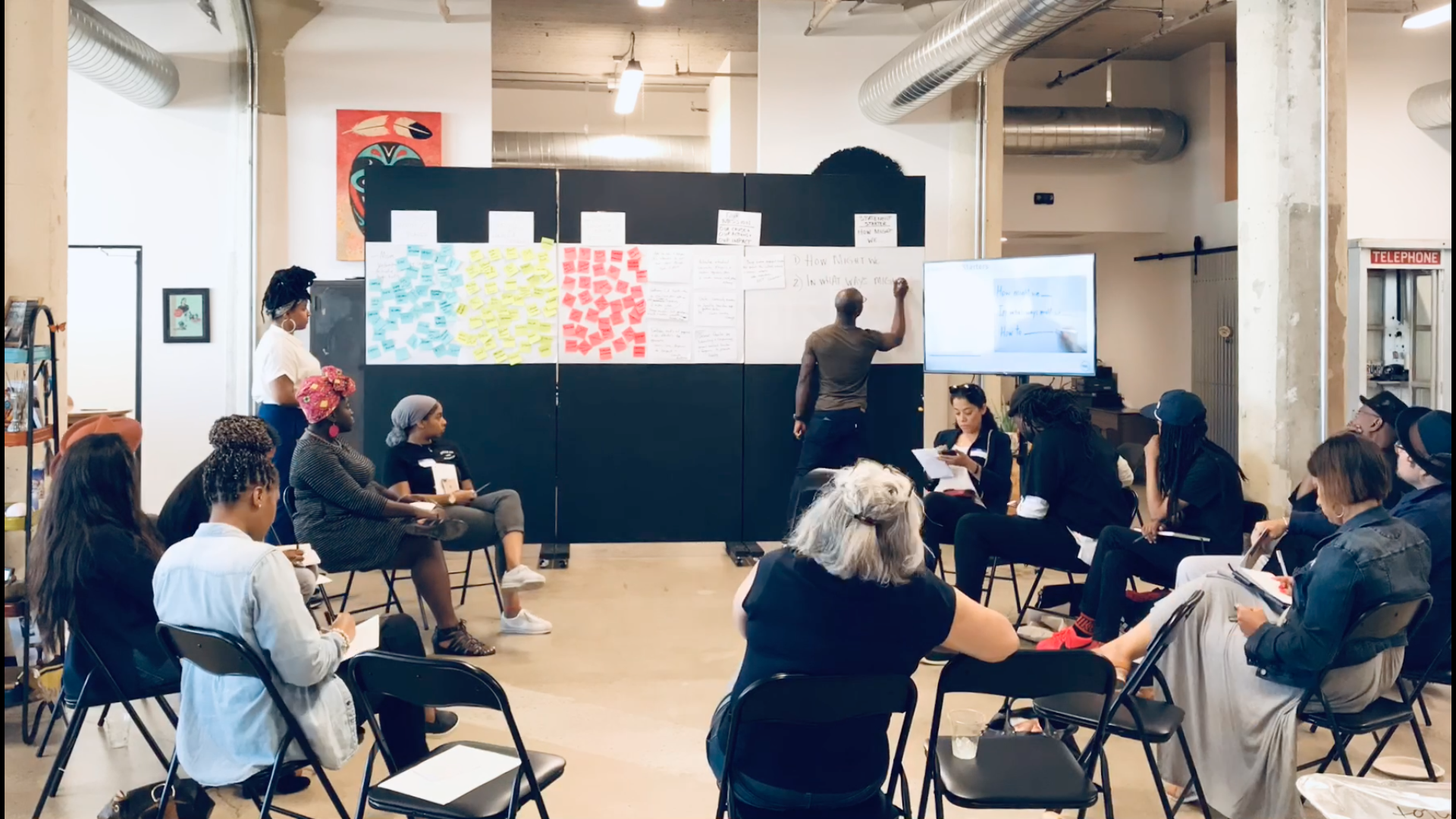
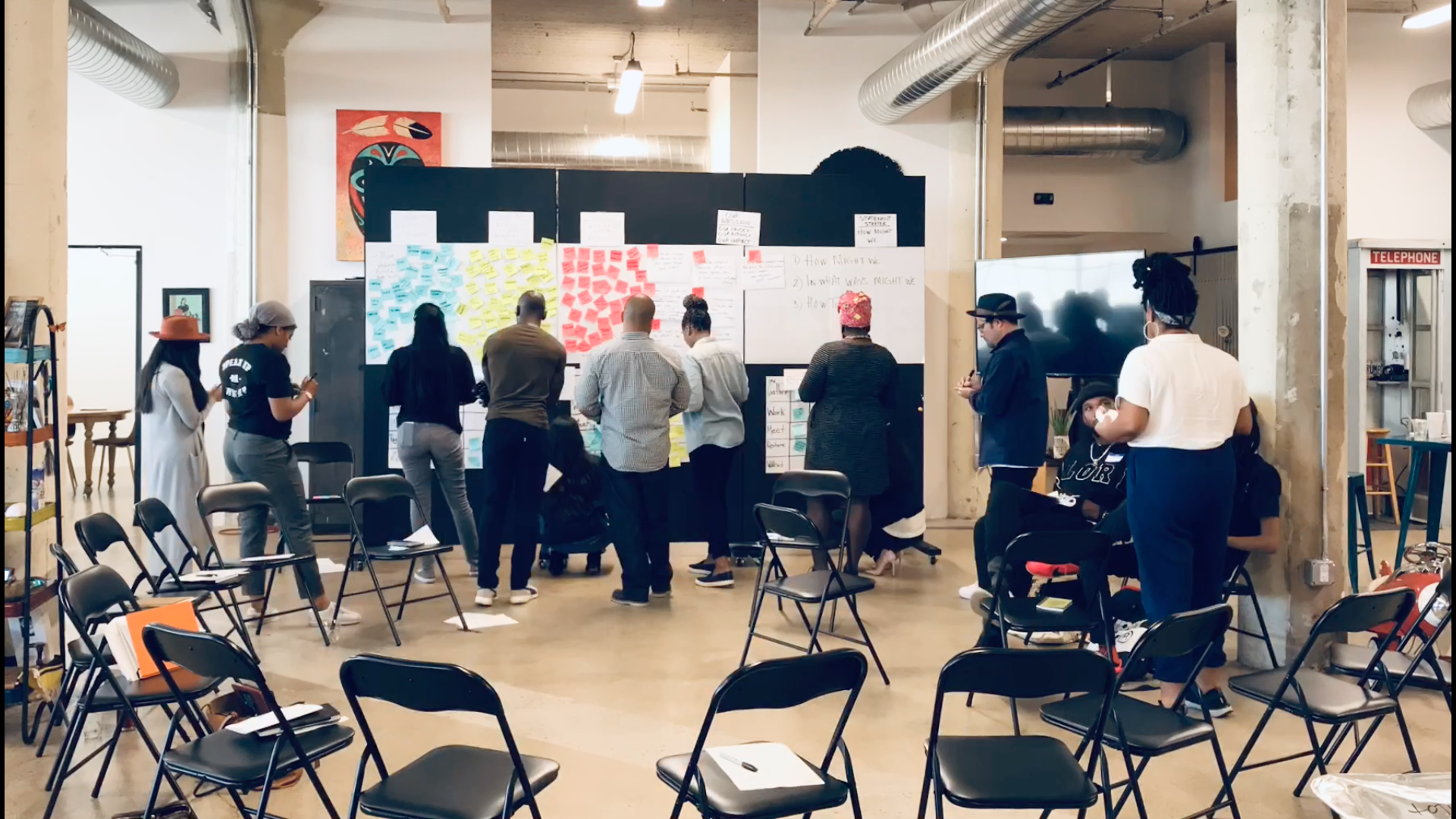
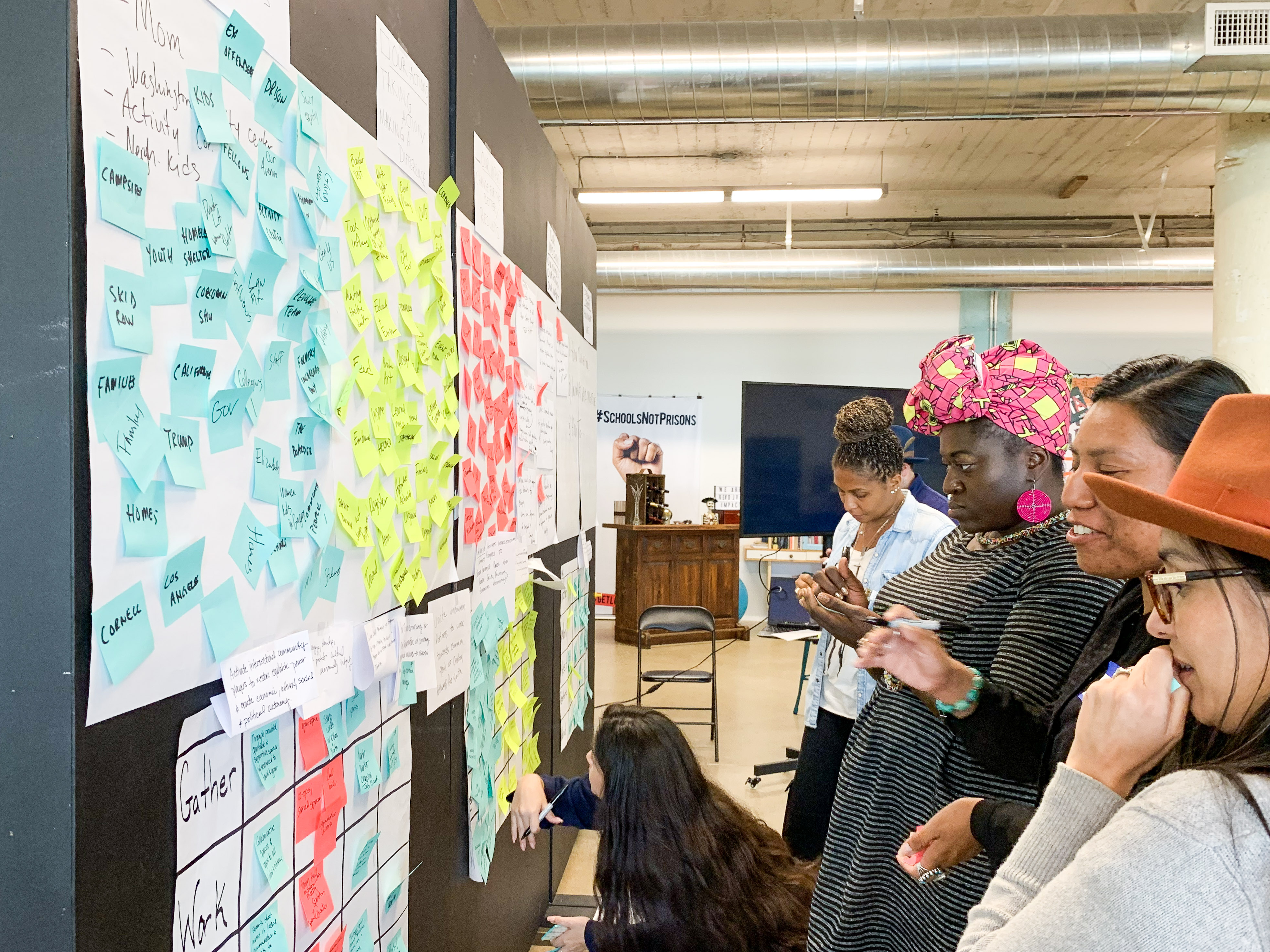
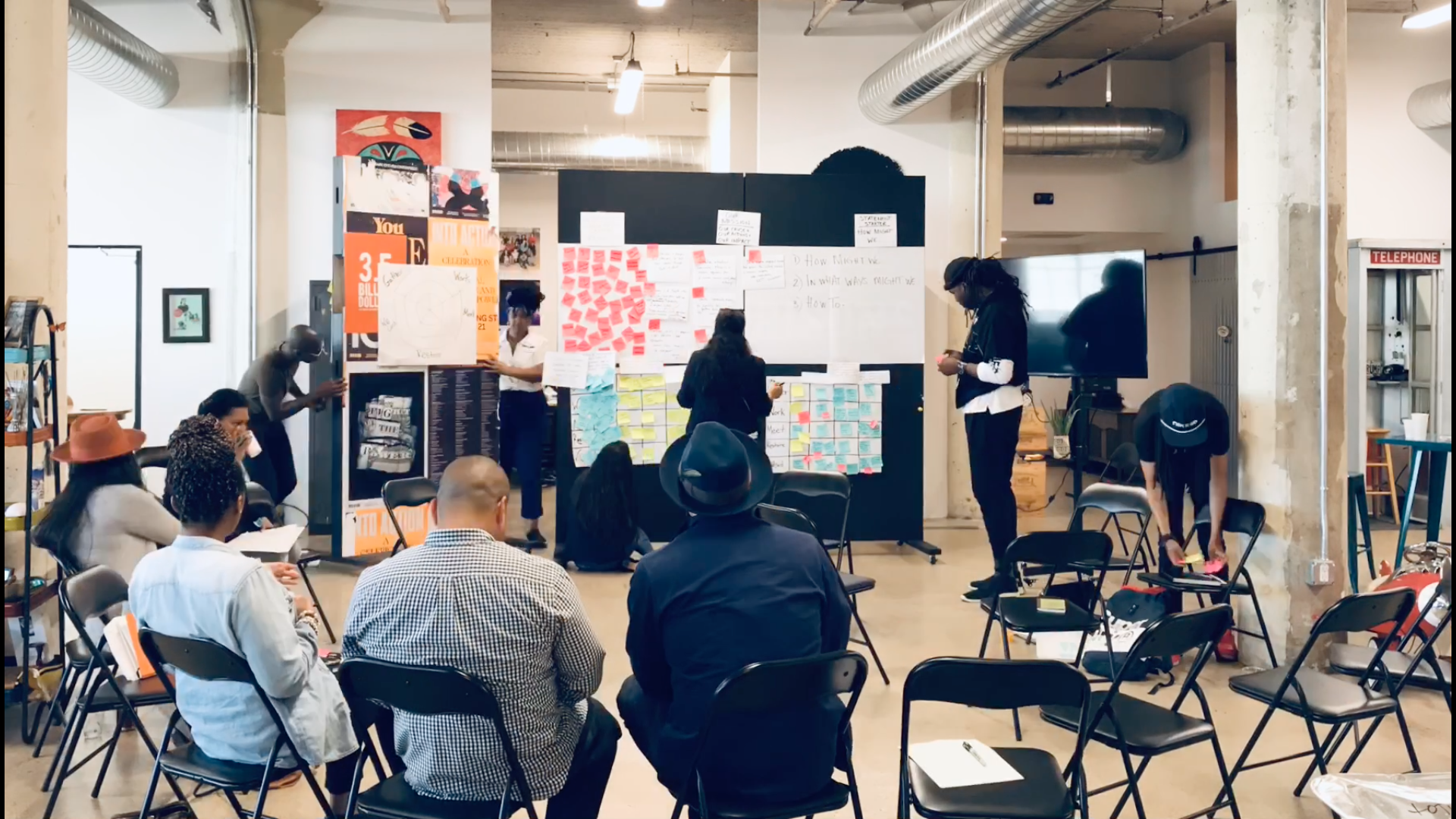

Collaborative Mission Statements
“Embrace the needs of gang members and ex-offenders by encouraging communication, love, and forgiveness for empowerment and community restoration.”
- Aim to educate and empower ex-offenders to tell their stories through
technology and art.
- Activate intersectional community players to restore equitable power
and create economic, social and political autonomy.
- Unite community members to directly transform the neighborhood
and by creating healthier enclaves and changing the narrative.
- Gathering LA youth and their families to educate and empower with
an effort to inspire collaboration in changing the narrative, shifting
paradigms, and building/redefining wealth to transform power.
- Serve families by educating and empowering them around emotional
freedom and forgiveness to promote healing.
- Be a community engaged developer that protects cultural, architectural, and economic integrity for urban regeneration, not gentrification.

Community leaders each wrote and shared a brief story about a time they felt they made an impact. From each story we noted all of the people and places (causes), activities and methods (actions), and outcomes (impact). In small groups using the aggregated pool of components, the community leaders used the formula our causes + our actions + our impact = our mission to develop the mission statements above in a matter of minutes.
The process was open-ended and not geared toward a specific project; however, we were laying the foundation for multi-dimensional approaches to making a positive impact in this community. The process was also open-ended because buy-in from community leaders was an existential component to any potential project. We could take nothing for granted. Our process was a deliberate, humble inquiry and effort to build trust.
The articulated missions driving the work of community leaders were far more profound and relevant to the community than anything I could imagine our team creating in the abstract. Their mission statements served as our north star in considering potential ways we could be of service. Our broad cross-functional/cross-departmental team examined every facet of the co-working experience -from financial modeling through design, operations, and programs- through the lens of what we learned.
The articulated missions driving the work of community leaders were far more profound and relevant to the community than anything I could imagine our team creating in the abstract. Their mission statements served as our north star in considering potential ways we could be of service. Our broad cross-functional/cross-departmental team examined every facet of the co-working experience -from financial modeling through design, operations, and programs- through the lens of what we learned.
Before we would present any of our ideas of how we thought we could help, we needed to introduce ourselves and the organization. It was even more critical to have a candid conversation with community leaders about all of the reasons they were skeptical of us, insofar that they were. Serving as the lead facilitator for the envisioning sessions, I attest that this conversation was the most bruising and vulnerable; a test of empathy and self-awareness that was ultimately a successful catalyst toward building trust.
In the third and final envisioning session, we shared our thoughts and ideas about how we thought we could help their community in pursuit of their articulated missions. Going from open-ended exercises to specific proposals brings about a reckoning with what one can and cannot do and a whole host of tangible, consequential considerations. Nonetheless, we succeeded in creating the vital foundation of trust with community leaders that fostered candid dialogue. Receiving the endorsements of the community leaders we worked with, especially those of the most ardent skeptics, was an extraordinary achievement - one that will certainly be a career highlight of mine for the foreseeable future.
In the third and final envisioning session, we shared our thoughts and ideas about how we thought we could help their community in pursuit of their articulated missions. Going from open-ended exercises to specific proposals brings about a reckoning with what one can and cannot do and a whole host of tangible, consequential considerations. Nonetheless, we succeeded in creating the vital foundation of trust with community leaders that fostered candid dialogue. Receiving the endorsements of the community leaders we worked with, especially those of the most ardent skeptics, was an extraordinary achievement - one that will certainly be a career highlight of mine for the foreseeable future.

This work is ongoing.
* The widely reported, precarious position in which WeWork as an organization found itself in September 2019 was very, very real. However, that situation didn't diminish the transformative potential of WeWork's core business - co-working and space as a service - for small businesses, enterprise organizations, and cities globally. WeWork has since prioritized its focus almost exclusively toward its core business.
Notes about my role
I served as the team lead for community engagement strategy and facilitation. My responsibilities included the design, development, and execution of a series of community envisioning sessions. I worked with cross-functional internal stakeholders to advance a synthesized approach to project delivery, design, and program development, leading 1:1 meetings with community stakeholders, and the synthesis of findings after each community envisioning session.
I served as the team lead for community engagement strategy and facilitation. My responsibilities included the design, development, and execution of a series of community envisioning sessions. I worked with cross-functional internal stakeholders to advance a synthesized approach to project delivery, design, and program development, leading 1:1 meetings with community stakeholders, and the synthesis of findings after each community envisioning session.
Client
Confidential
Typology
Civic Engagement, Community Led Design Processes,
Program Planning & Execution, Facilitation
Location
Los Angeles, CA
Size
N/A
Timeline
2019 - Present
Status
Ongoing
Program
Community outreach, engagement facilitation, 1:1 interviewing, programming, partnership incubation.
Confidential
Typology
Civic Engagement, Community Led Design Processes,
Program Planning & Execution, Facilitation
Location
Los Angeles, CA
Size
N/A
Timeline
2019 - Present
Status
Ongoing
Program
Community outreach, engagement facilitation, 1:1 interviewing, programming, partnership incubation.
Michael Caton, RA, AIA, LEED AP BD+C, CDTP